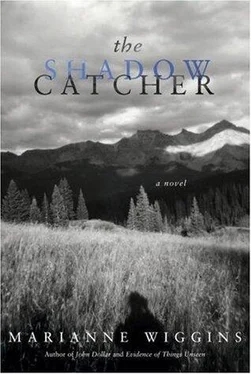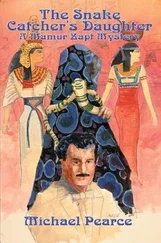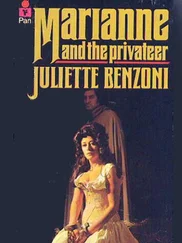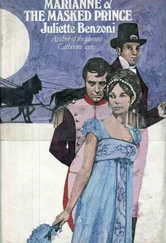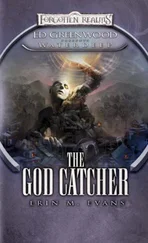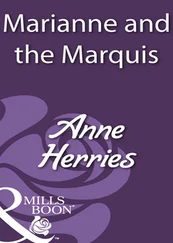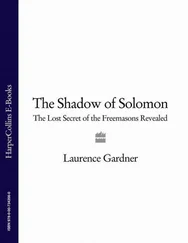“Has he done this before?” I asked her.
Again she wasn’t sure.
“How can I help you, mom? I’m three hundred miles away.”
“I need someone to tell me what to do.”
“Well, if he hasn’t done this before, then something might have happened to him. I think you should call the police.”
“I can’t do that.”
“It’s only a phone call. You can do it.”
“ You do it.”
“You’re going to have to do this, mom. In case there’s been an accident.”
“If there’d been an accident someone would have called by now.”
“They’ll want to know what kind of car he drives.”
“Oh god.”
“They might ask if you were arguing. Let them ask. Just answer calmly. They’re not judging you. It’s what they’re trained to do.”
“— police , for godsake. Do I have to—?”
Somehow, she did. The fact that he was missing moved up the chain of command: State troopers they were called, back in Pennsylvania. Out here the State guys are the CHP — California Highway Patrol — and much to my amazement one of them has set a flamingo-colored flare off up ahead of me in my lane on Route 15 and is signaling the east-bound traffic to pull over for a chat beside the road.
I watch the drivers of the two cars in front of me have brief exchanges with the uniform, then proceed ahead with caution, slowly.
“Officer,” I greet him.
“Ma’am.” His flashlight beam sweeps over me. “I have to ask you to go it slow the next few miles. We got sheep loose on the highway.”
“— sheep ,” I marvel. In this age of terrorism. “You need help rounding them up?”
The flashlight beam holds my eyes, then sweeps over to where his car is parked, blocking a gaping hole in the wire fence. “You’re the first to ask,” he says. “If you don’t mind putting your car where mine is it would free me up ’til we get some backup—”
The last time I was out among sheep was years ago in Wales, which was enough to convince me that creatures with that much space between their eyes make a wholly appropriate sound to describe their cognitive spatial dilemma.
It’s a toss, which are smarter: sheep or flounder.
I pull up behind the CHP cruiser, block the hole with my car as he drives away, turn the engine off, roll down all the windows. High desert air. Another roadside attraction. Sheep like to light out for the territory , too, I guess. You build a potential escapee every minute that you build a fence. And a fence might make good neighbors but not when it separates two parts of a self. When I first started charting the parts of Curtis that he had left behind, I figured that the panorama he saw from the train ride he had made out West with his father was what had set him off in search of American Indians. I thought it was wide open space that he had longed to light out to. That what he was afraid of, his Aunt Sally , was the cramped intimacy of family. The intimacy of love. He had fallen in love — or seemed to have, at least — with Clara, slightly younger though better educated than he. She was the perfect helpmate for him — frugal, where he was extravagant; level-headed, where he was too quick to pursue his fantasies — but as soon as their first child was born, Edward had lit out. He was gone two or three days every week; then a whole week at a time; then for a month. Soon he was out in the territory, among the tribes, for six or seven months.
I had always thought that what he was running from was the imprisonment of domestic life; from Clara, from their children. Then I took that trip to Pine Ridge and ended up spending the night in Wall, South Dakota, an outpost of ANGLO cowboyism outside the rez where tourists to the Dakota Badlands and Pine Ridge stop to spend the night, eat beef, booze up and buy the fake Sioux tat that passes as real Indian SOUVENIRS. Curtis is an industry in a place like Wall — I had known that postcards of his photographs were big out West but it hadn’t sunk in until I saw a six-foot rotating display in Wall Drug of his reproductions made small. It was the same day I’d had my little crise with the land and the sky and the agoraphobia so I was still feeling the effects of panorama. Panorama was all I could think about: the immensity out there: the uncompromising BIGNESS. And then I came face to face with a display of Edward S. Curtis postcards and all I could think was Oswald, Oswald, Oswald, Oswald —one after another— Oswald, Oswald, the disgusting Lee Harvey slang attribution for a HEADSHOT.
All the Curtis postcards were HEADSHOTS.
A whole rack of them.
And I realized: you don’t go into the West to make HEADSHOTS.
You go into the West the way Ansel Adams did — the way Timothy O’Sullivan and William Henry Jackson and Carlton Watkins did: for The Big Picture.
For the Views.
The pan-o-rama .
But there they were, lined up on a metal rack in Wall, South Dakota: face after face after face of intimacy —and oh, my Aunt Sally: who are we kidding when we think we can run?
You can flip through the entire Curtis oeuvre —all his photographs from Arizona, the Dakotas, Montana, Nevada, Idaho, New Mexico, Wyoming, Utah, Colorado, Washington, Oregon and my beloved California — more than 50,000 photographs in all, and you’ll find that less than half of them were photographed outside .
We reveal ourselves in everything we do. We reveal ourselves even when we think we’re hiding, even when we think we’ve got the wagon streamlined, when we think we’ve left the stuff we need to get away from far behind us.
It’s a tricky business, this invention of identity.
So I make the call:
“Hello, good evening, it’s Marianne Wiggins calling again.”
“—oh, hello, Miss Wiggins, what can we do for you?”
“I just wanted to let you know I decided to make the trip, maybe I can help you figure out who this guy is, posing as my father. But it looks like I won’t get to Vegas ’til the middle of the night.”
“Go to Emergency. I’m on ’til six. Have them call me and I’ll come and get you.”
And then, even though I know the man cannot be my father I ask, “ How’s he doing ?”
“Still unconscious. They don’t think he’ll linger long. You know, his age . The Indian’s still with him.”
“…the—??”
“—man who called the ambulance. Looks to be some kind of Indian. Truth is, we can’t get him to leave …”
Out in the dark, sheep gather like reflecting pools of moonlight. I realize I’m wearing sandals in snake country and climb up on my car roof. I lie down and gaze up at the stars. I know this man is not my father. Just like I know HAN JIN containers come all the way from China even though my sensory logic tells me the world is only what I see . Maybe that is ultimately the reason anyone lights out. To learn how big the big world is.
To find stories .
What can one 83-year-old stranger posing as my father tell me? He’s unconscious , silent as these stars. Silent as a photograph. You think you know someone by looking at his face but what can one face say about the thousand thoughts behind those eyes. Edward Curtis claimed he lit out for the territory to document a race of people he believed were vanishing before the nation’s eyes— The Vanishing Race was what he called the first photograph in Volume I.
He believed that the indigenous peoples of the United States were laid out on their deathbed, in their final throes, that he better light out for the territory to verify identities.
And maybe I am lighting out for Vegas just like Curtis did — for some final oath . We love the best we can and light out for the territory all our life, hoping for the button that says PRESS TO LEARN, fooling, maybe, no one on the way about who we are and where we’re going and the things we think we’ve left behind as we drive onward into silence past one great roadside attraction after another, never even knowing ’til we get there that we’ve carted our Aunt Sally with us, sound asleep, dormant, snoring, right behind us.
Читать дальше
